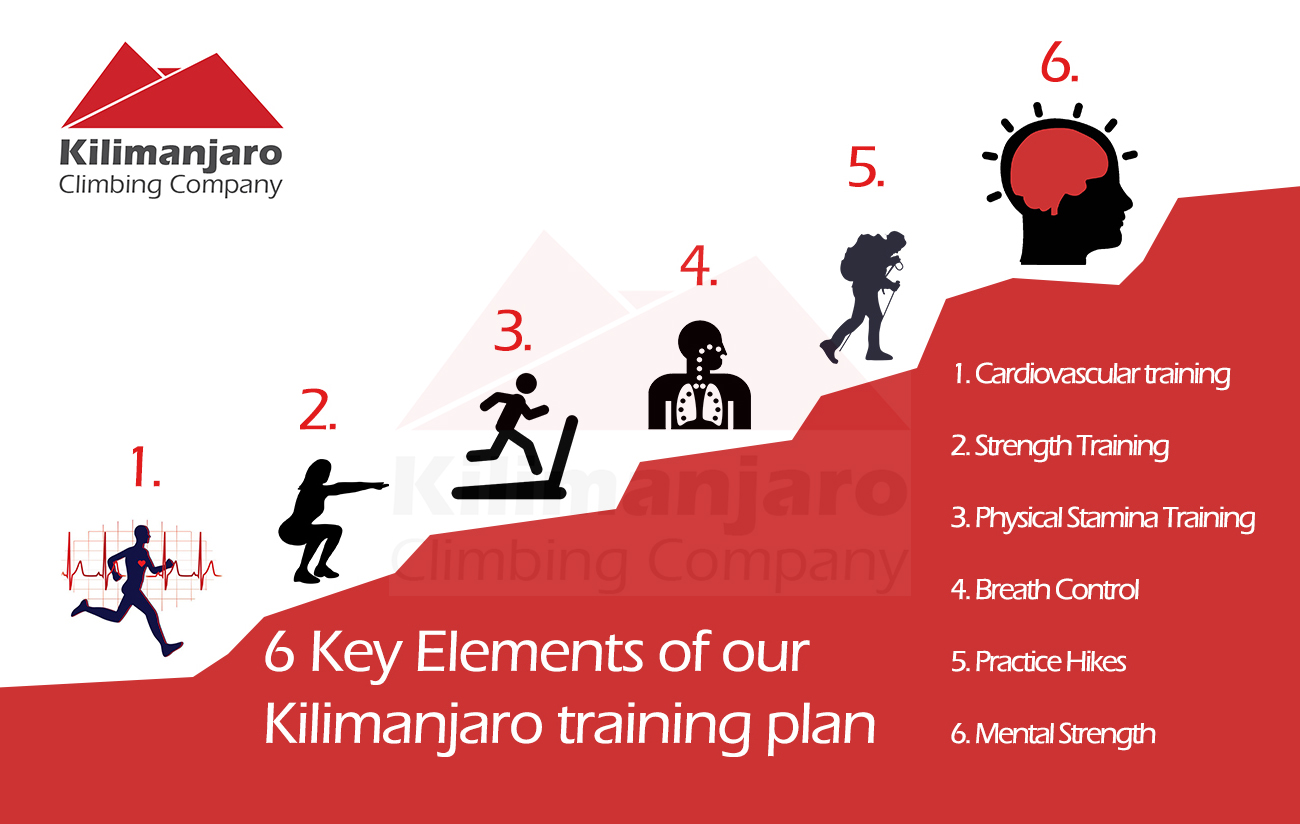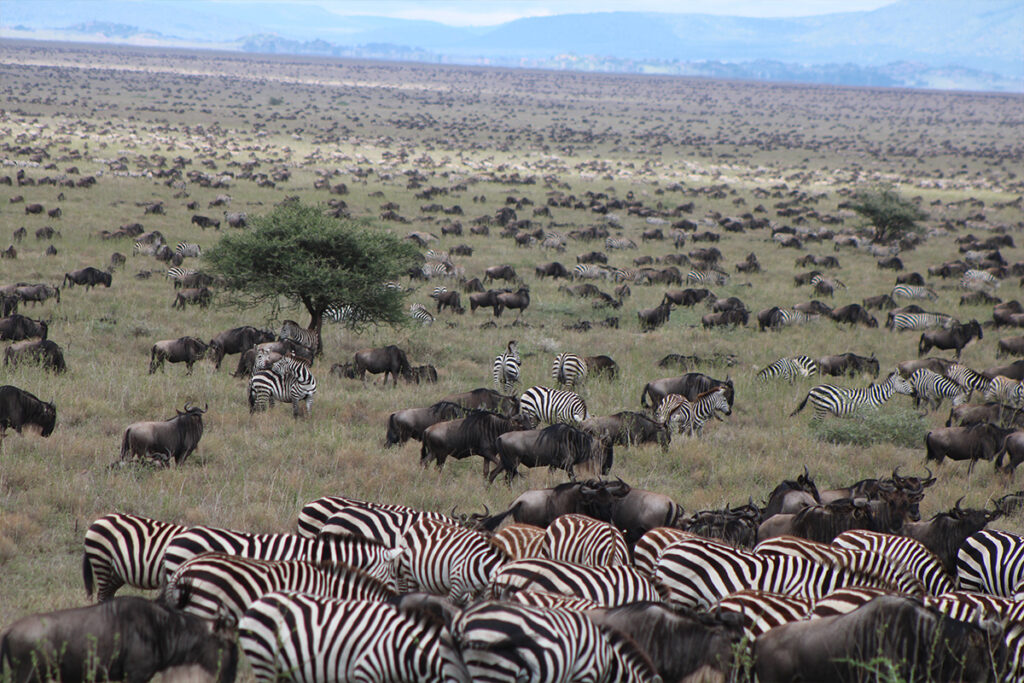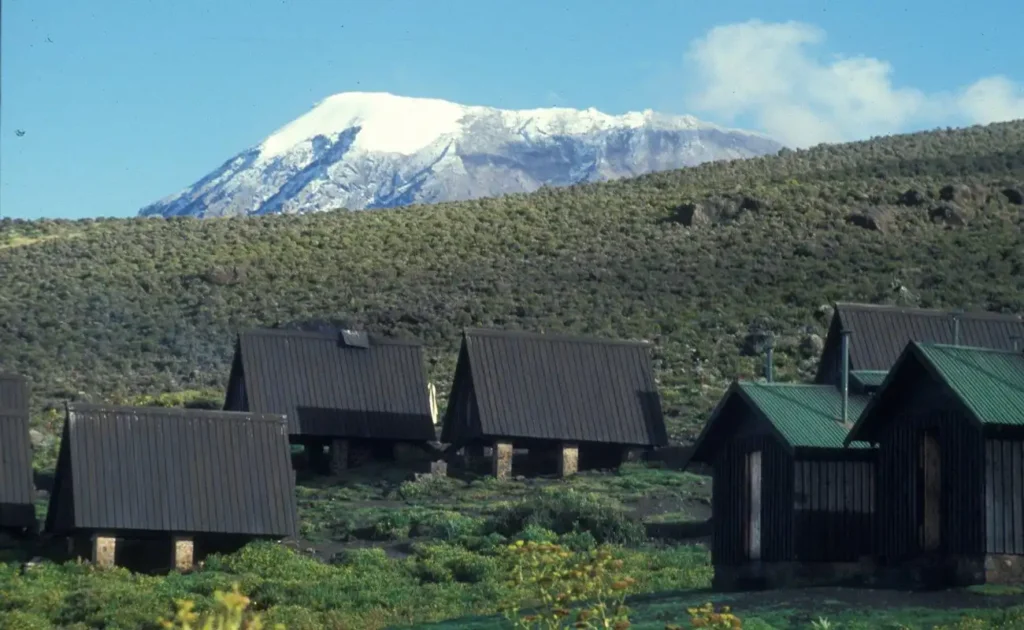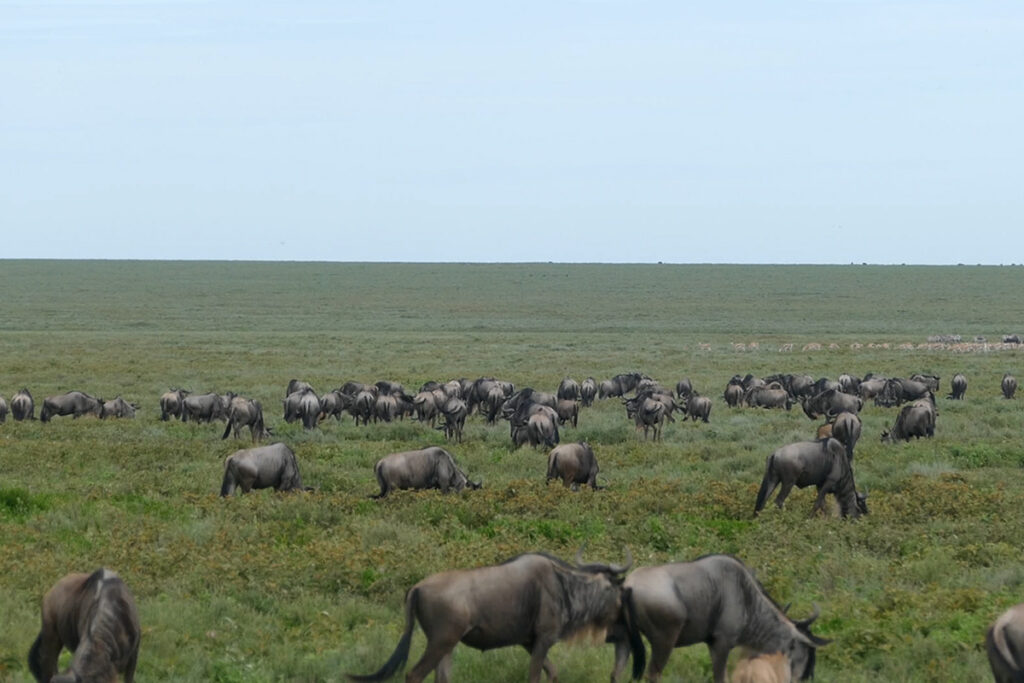Standing at 5,895 meters, Kilimanjaro is not just Africa’s tallest peak, but a testament to human endurance. Climbers often face the adverse effects of altitude sickness, yet thousands successfully summit it each year. So, how does one prepare for such an arduous adventure?
Training is crucial—committing to a fitness regimen that includes cardio, strength training, and hiking will help. Equally important is investing in the right gear; insulated clothing and quality boots can make a significant difference. Researching the best routes and acclimatization techniques will further increase your chances of a successful climb.

How to prepare for a Kilimanjaro climb?
Preparing for a Kilimanjaro climb takes effort and planning. Start by creating a fitness routine that focuses on strength, endurance, and flexibility. You can try activities like running, hiking, and biking to build stamina. It’s also helpful to practice walking on inclines, like hills or staircases. A solid training plan can make a big difference on the mountain.
Another important step is gathering the right gear. Quality shoes are a must to protect your feet. You will also need warm clothing and a durable backpack. A checklist might be helpful to make sure you don’t forget anything. Here is a simple list:
- Insulated jacket
- Waterproof pants
- Sleeping bag
- Hiking poles
Planning your route is next. The most common routes like Marangu, Machame, or Lemosho each have different challenges. Choose one that matches your fitness level and schedule. Guides can provide tips for tackling tough spots, so ask plenty of questions. Good route planning helps you acclimatize to the high altitudes safely.
Lastly, don’t forget about your health. Get a check-up before starting your journey. Health professionals can offer advice on vaccinations and medications. Staying hydrated and having a balanced diet are also crucial for maintaining energy levels. Keeping these health tips in mind ensures a safer climb.
Step #1: Establish a Training Program
Creating a solid training program is the first step in preparing for a Kilimanjaro climb. Focus on building cardiovascular strength with activities like running and cycling. You should aim for at least 30 minutes of cardio three times a week. Gradually increase the duration as you become more comfortable. Consistency is key to making progress over time.
Strength training is also important because it helps your muscles handle the physical demands of climbing. Focus on exercises like squats, lunges, and push-ups. They target the major muscle groups used during hiking. You can do these exercises at home with minimal equipment. Consider adding weights as you improve.
Including hiking in your training plan is essential. It mimics the conditions you’ll face on the mountain. Try to hike on weekends, gradually increasing the elevation and distance. Hiking is a great way to break in your boots and test your gear. Plus, it helps you adapt to different terrains and weather conditions.
Tracking your progress is a smart way to stay motivated. Use a table to log your workouts and monitor improvements. For example:
| Week | Cardio (minutes) | Strength Workouts | Hiking (miles) |
|---|---|---|---|
| 1 | 90 | 3 | 5 |
| 2 | 120 | 3 | 7 |
Step #2: Acquire Necessary Gear and Equipment
Getting the right gear is essential for a successful Kilimanjaro climb. Start with high-quality hiking boots, as they provide support and protection. Make sure to break them in before your trip to avoid blisters. You’ll also need a sturdy backpack for carrying necessities. Prioritize items that can withstand varying weather conditions.
Layered clothing is important because temperatures can fluctuate. During the day, it might be warm, but evenings are often chilly. Choose moisture-wicking materials that dry quickly. A good set of thermal wear, a fleece jacket, and a waterproof outer layer are all recommended. This helps to keep you comfortable at different altitudes.
Don’t overlook smaller items that make a big difference. A headlamp is crucial for early morning or nighttime hiking. Sunglasses and sunscreen protect you from the sun’s harsh rays. For safety, carry a first-aid kit and basic medication. Here’s a quick list of additional essentials:
- Gloves and warm hat
- Water bottles or hydration system
- Energy snacks
- Camera or journal for memories
Price is a big factor, so consider renting some gear if buying is too costly. Many shops near Kilimanjaro offer this option. Renting sleeping bags and poles can be economical. Plan ahead and make reservations, especially during the busy climbing season. This ensures you have everything you need without breaking the bank.
Step #3: Plan Your Route and Acclimatization Strategy
Planning your route up Kilimanjaro is a crucial part of your preparation. Each route offers different challenges and rewards. The Marangu route, for example, is known for its “Coca-Cola” huts and is the only route with dormitory-style accommodations. The Machame route is popular for its scenic views but is more challenging. Choosing the right route depends on your fitness level and preferences.
Acclimatization is key to avoiding altitude sickness. Spend a few extra days on the mountain to give your body time to adjust. The “climb high, sleep low” strategy is a good way to acclimatize. It involves climbing to a higher altitude during the day and sleeping at a lower altitude. This helps your body gradually adapt to the changing elevations.
Consider making a detailed itinerary to keep track of each day’s plan. Include rest days in your schedule to give your body a chance to recover. Here’s an example of a simple itinerary that balances hiking and rest:
| Day | Activity | Elevation |
|---|---|---|
| 1 | Start hike | 2,000 m |
| 2 | Reach camp | 3,000 m |
| 3 | Short acclimatization hike | 3,500 m |
| 4 | Rest day | 3,000 m |
Researching the weather is also important for route planning. The best times to climb are during the dry seasons, from January to early March and from June to October. Bad weather can make the climb harder and more dangerous. Adjust your gear and schedule according to the expected weather conditions.
Lastly, hire a reputable guide service with experience on Kilimanjaro. They can provide invaluable advice and support. A good guide helps manage the pace, plan meals, and handle emergencies. Their expertise increases your chances of reaching the summit safely.
Kilimanjaro Climbing Routes Overview
Mount Kilimanjaro offers several routes to its summit, each with unique features. The Marangu route, often called the “Coca-Cola” route, is the only one with hut accommodations. It’s regarded as the easiest path, though it has fewer scenic views compared to other routes. Hikers new to mountaineering often choose Marangu for its simplicity. This route takes about 5 to 6 days to complete.
The Machame route, known as the “Whiskey” route, is more challenging but very popular. It offers stunning panoramic views and diverse landscapes. Hikers traverse through rainforests, moorlands, and alpine deserts. The climb usually takes 6 to 7 days, allowing better acclimatization. This route demands a higher level of fitness.
For those seeking a quieter trail, the Lemosho route is a great choice. It begins on Kilimanjaro’s western side and takes 7 to 8 days. Lemosho combines panoramic views with rich wildlife sightings. This route offers a good balance of challenge and scenic beauty. It also provides more time for acclimatization, reducing the risk of altitude sickness.
Shira route is known for its remote trail and wilderness appeal. It follows the same path as the Lemosho but starts higher up the mountain, so it requires a solid pre-climbing acclimatization plan. Though it is less crowded, its starting elevation might challenge beginners. Hikers often enjoy the solitude this route provides. It’s typically completed in 7 days.
- Rongai route begins near Kenya and provides a different perspective of Kilimanjaro.
- It is one of the quieter paths, usually taking 6 to 7 days to complete.
- This route is favored during the rainy season as it receives less precipitation.
- The gradual ascent makes Rongai a suitable option for beginners.
The Northern Circuit is the newest and longest route. It covers the most ground and offers a 360-degree path around the mountain. This route generally takes 9 days, providing ample time for acclimatization. It is famous for its high success rates in reaching the summit due to the extended time for adaptation. Adventurers seeking a comprehensive Kilimanjaro experience often choose this path.
Health Considerations and Safety Tips for Kilimanjaro Climbers
Climbing Kilimanjaro requires careful attention to health and safety. Altitude sickness is a common concern as it can affect anyone regardless of age or fitness level. Symptoms include headaches, nausea, and dizziness. To prevent it, climbers should ascend slowly and take rest days. Drinking plenty of water and avoiding alcohol can also help.
It’s wise to get a medical check-up before embarking on your journey. A doctor can advise on vaccinations, such as those for yellow fever and malaria. They might also prescribe medication for altitude sickness. Ensure you’re fit for physical activity since the climb is demanding. Consulting a healthcare professional helps prepare for any medical challenges.
Proper hydration is important while trekking. Aim to drink at least 3 liters of water daily. This keeps your body functioning well and can reduce tiredness. Water purification tablets are handy for treating stream water. Staying hydrated boosts energy and stamina.
Bring a basic first-aid kit to handle minor injuries. It should include items like band-aids, antiseptic wipes, and pain relievers. Blisters from continuous walking are common, so pack moleskin or blister pads. Knowing first-aid techniques is beneficial. Being prepared for small mishaps allows for peace of mind.
- Stay attentive to weather changes and dress appropriately.
- Follow your guide’s advice for a safer journey.
- Keep your energy up by eating nutrient-rich snacks.
- Rest when needed to avoid exhaustion.
Lastly, travel insurance is a smart investment. It should cover high-altitude trekking and emergency evacuations. Although many climbers successfully reach the summit, having insurance ensures help is available if something unexpected happens. Choosing the right insurance makes your adventure more secure. Guides can also assist in emergencies, providing valuable guidance along the way.
Frequently Asked Questions
Climbing Mount Kilimanjaro is an exhilarating adventure that requires preparation and knowledge. Here, we address some common questions to help you plan your journey successfully.
1. What is the best time to climb Kilimanjaro?
The best times to climb Kilimanjaro are during the dry months of January to March and June to October. These periods offer the most stable weather with clear skies, ideal for hiking and enjoying stunning views. While these months are popular, planning your trip early helps secure accommodations and guide services.
During these times, trails tend to be less muddy, making the climb smoother. However, it’s important to prepare for varying temperatures, especially as you ascend higher. Even during the dry season, the mountain can experience sudden weather changes, so come equipped for all conditions.
2. How long does it take to climb Kilimanjaro?
Climbing Kilimanjaro typically takes between 5 to 9 days, depending on the route and pace. Longer routes, like the Lemosho or Northern Circuit, aid acclimatization and improve your chances of reaching the summit. The added days allow your body to adjust to the altitude, reducing the risk of altitude sickness.
Faster routes, such as the Marangu or Machame, may take less time but carry a higher risk of altitude-related issues. Choosing a route that suits your fitness level and scheduling extra acclimatization time can significantly enhance your overall experience and safety.
3. Is a guide necessary for climbing Kilimanjaro?
Yes, a licensed guide is mandatory for climbing Kilimanjaro. Guides not only ensure safety but also provide valuable insights about the mountain. They help manage the pace, organize camps, and respond to emergencies. This support increases your chances of a successful and enjoyable climb.
Additionally, guides play a crucial role in preserving the mountain’s ecosystem by following sustainable practices. Their knowledge of the terrain and weather patterns can make your ascent more efficient and enjoyable. Having an experienced team alongside you can turn challenges into memorable experiences.
4. What should I include in my gear pack for Kilimanjaro?
Essential gear for Kilimanjaro includes waterproof boots, layered clothing, a warm sleeping bag, and a sturdy backpack. Be sure to pack a high-quality jacket and thermals for cold nights. Portable water filters, first aid kits, and sun protection are also key items to consider bringing with you.
Each piece of equipment plays a role in your safety and comfort on the mountain. Carefully selecting and testing your gear before the trip can help prevent minor problems from becoming major setbacks. Be prepared for rapidly changing weather at different altitudes by checking reviews and recommendations.
5. How fit do I need to be to climb Kilimanjaro?
While you don’t need to be a professional athlete, a good fitness level is crucial. Cardiovascular fitness, endurance, and strength are important. Regular workouts that include hiking, running, and strength training help prepare your body for the climb. Consistent training can make the journey easier and more enjoyable.
Mental resilience also plays a part in your success. The mental challenge of a long climb can be taxing, so having a positive mindset can be beneficial. Many find that the determination and effort put into preparation translate to a sense of accomplishment when reaching Kilimanjaro’s summit.
Conclusion
Preparing for a Kilimanjaro climb involves a blend of physical training, careful planning, and acquiring the right gear. Understanding the different routes and focusing on acclimatization can greatly enhance your experience and safety. It’s not just about reaching the summit, but enjoying the journey as well.
Paying attention to health considerations ensures you’re ready for the challenges ahead. With thorough preparation and the support of experienced guides, your Kilimanjaro adventure can be both rewarding and unforgettable. Embrace every moment of this remarkable journey.



